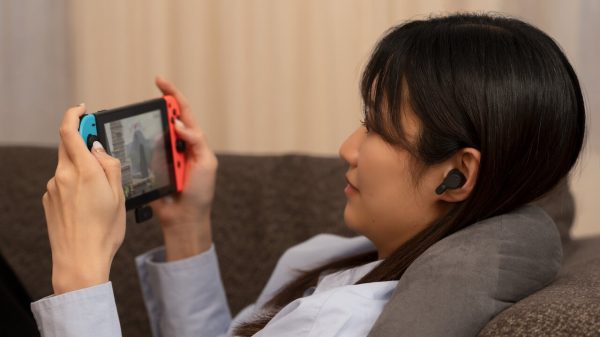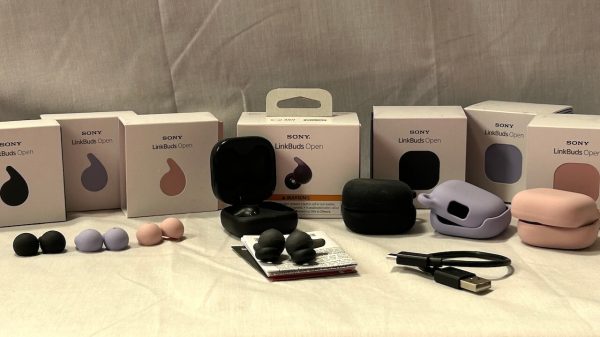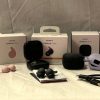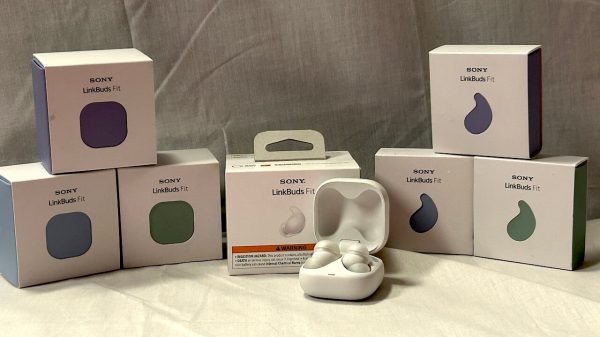1More is a brand that has persisted over the past decade against some pretty strong headwinds and become one of the leading global headphone brands in the value category. The Chinese manufacturer was started in 2013 by 3 former Foxconn executives and after securing a capital investment from Chinese smartphone maker Xiaomi Corp, the brand went on to sell over 10 million earphones in its first 24 months.
That early success enabled the brand to expand overseas and it has done very well in North America; The Shenzhen-based company has focused on IEMs and on-ear headphones for almost every niche that one can think of and kept all of it affordable.
Not every product has been a success, but the products that have been strong performers remain in the lineup and we’ve had an opportunity to review most of them.
1More has always been focused on delivering more for less and they certainly offer a more compelling product than SkullCandy; if your budget is under $120 USD for headphones, 1More is not a risk at all if you’re looking for something that will last and deliver solid sound quality.

The $169 USD asking price for the 1More Evo Wireless Earbuds raised a few eyebrows around here because the competition between $150 and $200 for wireless earbuds is a battle between Apple, Bose, and Beats.
Can 1More deliver a superior pair of wireless earbuds at this price point and push its way into the ring with the companies that can afford to spend tens of millions of dollars each quarter on advertising?
You might be surprised by our answer.
The Skinny
The industrial design of the 1More Evo is reminiscent of the Colorbuds Series, but the materials and build quality are far superior; the wireless earbuds use an aluminum chassis and high gloss ceramic touch sensor faceplates finished with bronze accent rings.

1More claims that the ceramic not only improves the look of the design but also results in better connectivity because the material interferes the least in comparison with other touch sensors that were tried during development.
The earbuds are mid-sized and the chosen shape lends itself to longer listening sessions because all of the surfaces are well polished and anodized; there are no rough or sharp edges to be found on these earbuds.
The shells are rather thick and the passive isolation is reinforced by the placement of the earbuds on your ear.

The tips are a custom material with some added grip in comparison to standard silicone ear tips which helps to keep the earbuds in place during exercise or other activities. The 1More Evo are IPX4 rated which means that you will be fine using them during a workout but don’t take them in the pool.
The anodized aluminum charging case feels rather robust and I was surprised to see that 1More extended that to the internal charging pods as well.
There is a button for pairing between the two compartments and a single LED on the front of the case to indicate charge status. All of these touches show the commitment to higher end materials and machining; which I think is necessary for a brand that is trying to take on Apple, Beats, and Bose.

The case will charge the earpieces roughly 3 full times before users will be required to recharge the case through the USB Type-C port or a wireless charging pad if you own one.
The overall build quality and design makes the 1More Evo competitive with the Apple AirPods Pro, but unless they can deliver the same features and superior sound quality — they don’t stand much of a chance in the category.
Internally, the 1More Evo use a 10mm dynamic driver with a diamond-like carbon coated diaphragm and a single balanced armature to augment the treble; the driver design is a step-up from their previous models in terms of the quality of the drivers and their implementation.

The Evo are Bluetooth 5.2 capable with support for the SBC, AAC, and LDAC protocols; the wireless earbuds also support Bluetooth Multipoint which allows users to pair the earphones with more than one device and not have to constantly fidget with them when moving between sources like your smartphone, laptop, or tablet.
To enable this feature, you need to open the app, tap on the 1More logo, select the experimental features tab, and enable dual-device support.
We agree that this is a lot of steps to turn on the feature and we hope that the forthcoming firmware update moves this higher up in the menu and it becomes something you can enable with only one tap.
Pairing was very easy with Google’s Fast Pair, and I found it just as quick with iOS devices like my iPhone. Once you are connected, the signal is rather reliable as long as you keep the distance between the earphones and source device under 30 feet and you are not separated by multiple walls inside your home or office.
Once paired, most functions can be handled by the touch controls and like most wireless earbuds, it is a combination of single tap, double, triple, and touch and hold in order to change the various modes, move between songs, and adjust the volume.
My one complaint is that there are no prompts to let you know if you have hit the right combination; the app might be the better option in terms of controlling specific features.
The app menu gives users access to ANC and a number of listening modes; you can also control all of the playback controls through the app as well.
The custom settings option lets users customize the tap sequence on the touch sensors, but the options are limited and one is likely to mess them up or even erase a setting if you make a mistake.
The SoundID option lets you take a Sonarworks hearing test and customize the EQ based on your results; A new firmware and app version adds a full customizable EQ and presets so you can tune individual tracks as desired if the full time Sonarworks tuning isn’t your thing.


Android users need to pay attention to the Bluetooth connection setting; if you don’t tell the Evo via the app to prioritize sound quality, it drops back to AAC or SBC.
Apple users can skip this step but for devices that support LDAC, you will want to switch to “Priority on Sound Quality” in the app. The remaining menu items allow firmware updates, access to the manual, and the pathway to meditative and soothing sounds when you want to relax or sleep.


There is a second menu in the app that I discovered by accident; if you click the 1More logo in the upper right corner, a drop-down menu appears. This menu provides access to the aforementioned Bluetooth Multipoint feature, a smart burn-in option, and the ability change the color of the app to match your earphones.
The battery life is dependent on which features you enable with ANC and LDAC; both put a heavy drain on the battery.
With all of the big power draw items disabled, the Evo gets around 7.5 hours of listening time per charge and the case provides roughly three additional charges; turning on ANC and LDAC will drop that to roughly 5 hours.
The good news is that a quick charge of the Evo which is about 15 minutes worth of recharging will earn you a few hours of listening time.
Sound Quality
1More have focused on TWS earphones that utilize a single dynamic driver and with the exception of the Triple and Quad driver hybrids in their wired lineup, that has been the deal up to this point.
The Evo is their first hybrid TWS using both a dynamic driver and balanced armature; making the Evo their first genuine pair of audiophile quality wireless earbuds.

Most of the range is handled by the dynamic driver with the armature adding the top end that some dynamic drivers struggle with; there is a definite absence of top end airiness and energy on many of the wireless earphones that utilize this type of driver.
I’m sure there are listeners who will scoff at my suggestion that Bluetooth codecs sound different but it was quite obvious to me that the 1More Evo sounds dramatically better with LDAC that allows streaming high-resolution audio over Bluetooth connections at up to 990 kbps at 32-bit/96kHz.
The sub bass has very good extension and definition and it never really overpowers the rest of the bass range or bleeds over in the lower midrange. I found the Evo to be one of the more linear sounding TWS earphones that I have tried so far with a roll-off around 5kHz in the treble.
The mid bass is delivered with solid impact, texture, and speed and it also never crossed over into the lower midrange which was very impressive; most budget wireless earphones suffer from this form of bass bleed or a lack of definition, but I was pleasantly surprised by the transparency, definition, and speed across the bottom end.
This may not be the ideal set of wireless earbuds for bass heads, but at its price point — it is far more impressive than almost every budget pair in that regard.
The midrange is very clean sounding with excellent note weight and timbre; male vocals cut through the instrumentation well and I found the tonality to be quite accurate with most vocalists. Female vocalists are well defined and accurate sounding and the aforementioned roll-off at 5kHz keeps them from ever sounding strident on thin.
The violin can sound somewhat flat at the top end of its range but that’s a small price to pay for the overall tonal accuracy of these wireless earphones.
The treble can be somewhat polite sounding; the lower treble has the same detail and presence of the upper midrange but as we climb higher into the range, there is that distinct dip; snares have sufficient rattle and snap, but cymbals have less energy in the upper range to sound truly natural.

There is some additional energy added back in the range above 12kHz which keeps the Evo from sounding closed in and there is some airiness to the sound that never really came across as fatiguing.
The soundstage has adequate width and height, but the smaller soundstage is very common in most closed back TWS earphones; the orchestra is depicted as being wider and shallower than how it exists in real life.
The imaging and layering are surprisingly good for a TWS at this price point; musicians and instruments are carved firmly in place and with rather realistic separation.
I was prepared for less than stellar sonics when I engaged ANC and much to my surprise, the Evo didn’t sound that different. There is a mild level of hiss with ANC at its highest level, but I’m not sure you need to use that setting.
1More claims a 42 dB reduction in noise, and while that might be the case, the Evo does not isolate as well as the Sony WF-1000XM4 which I compared it to during the review.
The 1More Evo is also 50% less expensive than the Sony which makes its performance with ANC quite impressive.
What I really like are the four levels of adaptive ANC because the reality is that you do not always need the maximum amount possible if you are just trying to listen to music in a relatively quiet setting but want to eliminate any external noise.
One thing to note is that the Evo has no sidetone for calls. (it doesn’t echo your own voice back to you via the earpiece). If you engage the ambient voice enhancement mode before a call, it will act as sidetone though and may make calls clearer. Unfortunately, once in a call there is no way to adjust.

Conclusion
1More’s mission was to create a wireless IEM with ANC that could compete with similar offerings from Sony, Bose, and products like the Apple AirPods Pro.
That’s a rather tall order.
Does the 1More Evo offer comparable or superior sonic performance to the aforementioned TWS earphones?
It does.
Does the engineering and build quality suffer at only $169?
I would make the argument that 1More have delivered a very well engineered product that is built to very high standards for a lot less money and that it may be the best pair of TWS earphones below $200 currently available.
1More have always been about offering more for less — these might be their biggest bargain yet.
Where to buy: $169.99 at Amazon | Amazon.ca | Amazon.co.uk | 1More.com



































